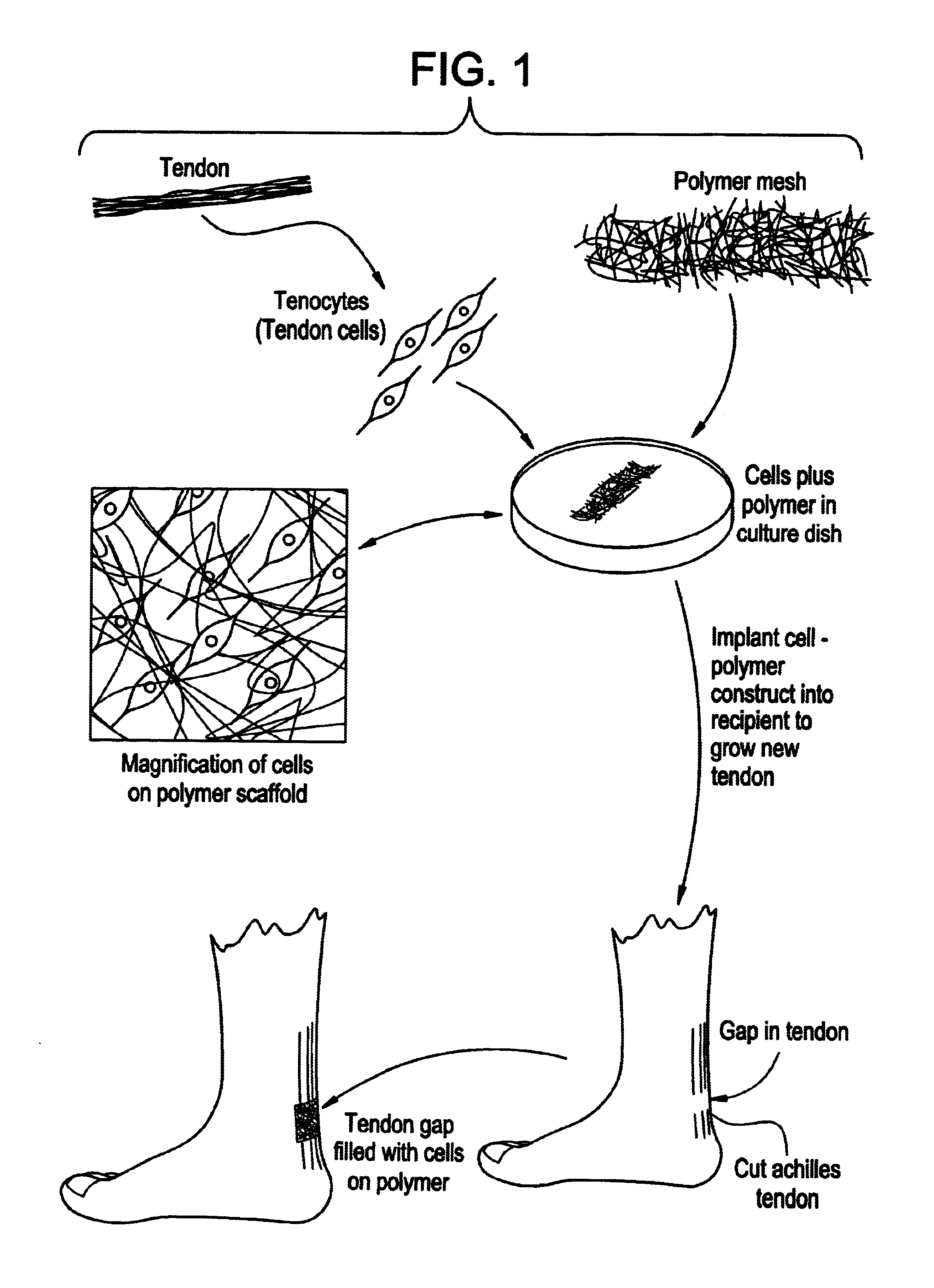Tissue engineered tendons and ligaments
a technology of tendons and ligaments, applied in the field of tissue engineered tendons and ligaments, can solve the problems of disordered structure which imparts this ability to the connective tissue, tendon defects, and proves difficult problems for orthopedic surgery and hand surgery, and achieves the effect of moderate tensile strength
- Summary
- Abstract
- Description
- Claims
- Application Information
AI Technical Summary
Benefits of technology
Problems solved by technology
Method used
Image
Examples
example 1
Construction of Neo-tendon
Method and Materials
Sheets approximately 100 microns thick composed of an embossed non-woven mesh of polyglycolic acid with interfiber interstitial spacing averaging 75 to 100 microns in diameter, arranged as either a random array of fibers, or as fibers in parallel (Dexon, Davis and Geck), were cut into pieces approximately 0.4 cm×4 cm and set aside. Tendon was obtained from the shoulder of newborn calves within six hours of sacrifice. The tendons were diced into pieces approximately 0.5 cm×0.5 cm and placed in a sterile 50 ml conical tube. The tendon pieces were washed twice with Dulbecco's phosphate buffered saline (PBS) (Gibco, Grand Island, N.Y.). A sterile 0.396 Collagenase solution was prepared by mixing 75 mg of type collagenase (Worthington, Freehold, N.J.) with 25 ml of Hamm's F-12 medium (Gibco, Grand Island, N.Y.). The tendon fragments were incubated in the collagenase solution for 12-16 hours at 37° C. on a shaker. After digestion, the solution...
PUM
| Property | Measurement | Unit |
|---|---|---|
| diameter | aaaaa | aaaaa |
| diameter | aaaaa | aaaaa |
| thick | aaaaa | aaaaa |
Abstract
Description
Claims
Application Information
 Login to View More
Login to View More - R&D
- Intellectual Property
- Life Sciences
- Materials
- Tech Scout
- Unparalleled Data Quality
- Higher Quality Content
- 60% Fewer Hallucinations
Browse by: Latest US Patents, China's latest patents, Technical Efficacy Thesaurus, Application Domain, Technology Topic, Popular Technical Reports.
© 2025 PatSnap. All rights reserved.Legal|Privacy policy|Modern Slavery Act Transparency Statement|Sitemap|About US| Contact US: help@patsnap.com

